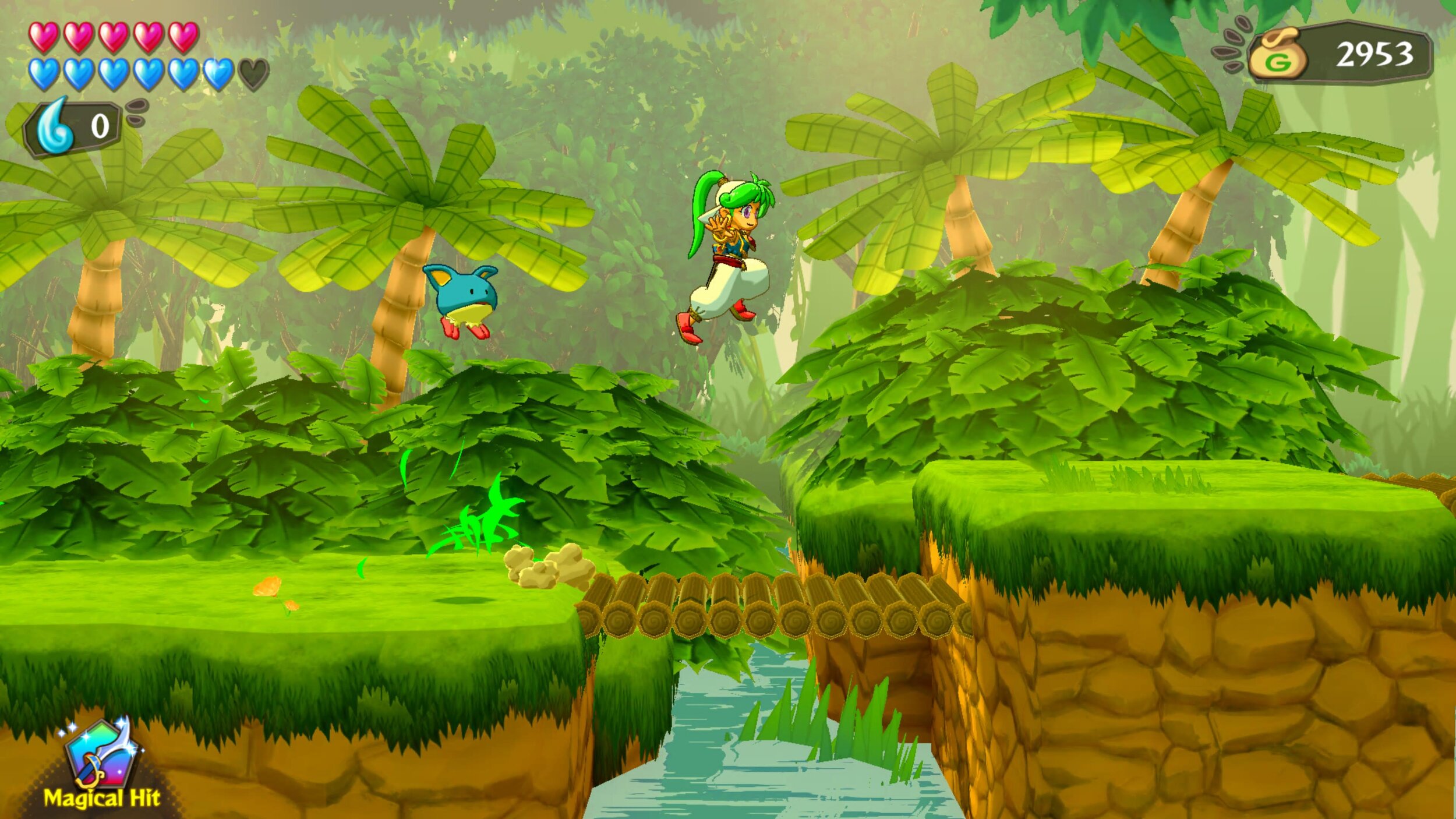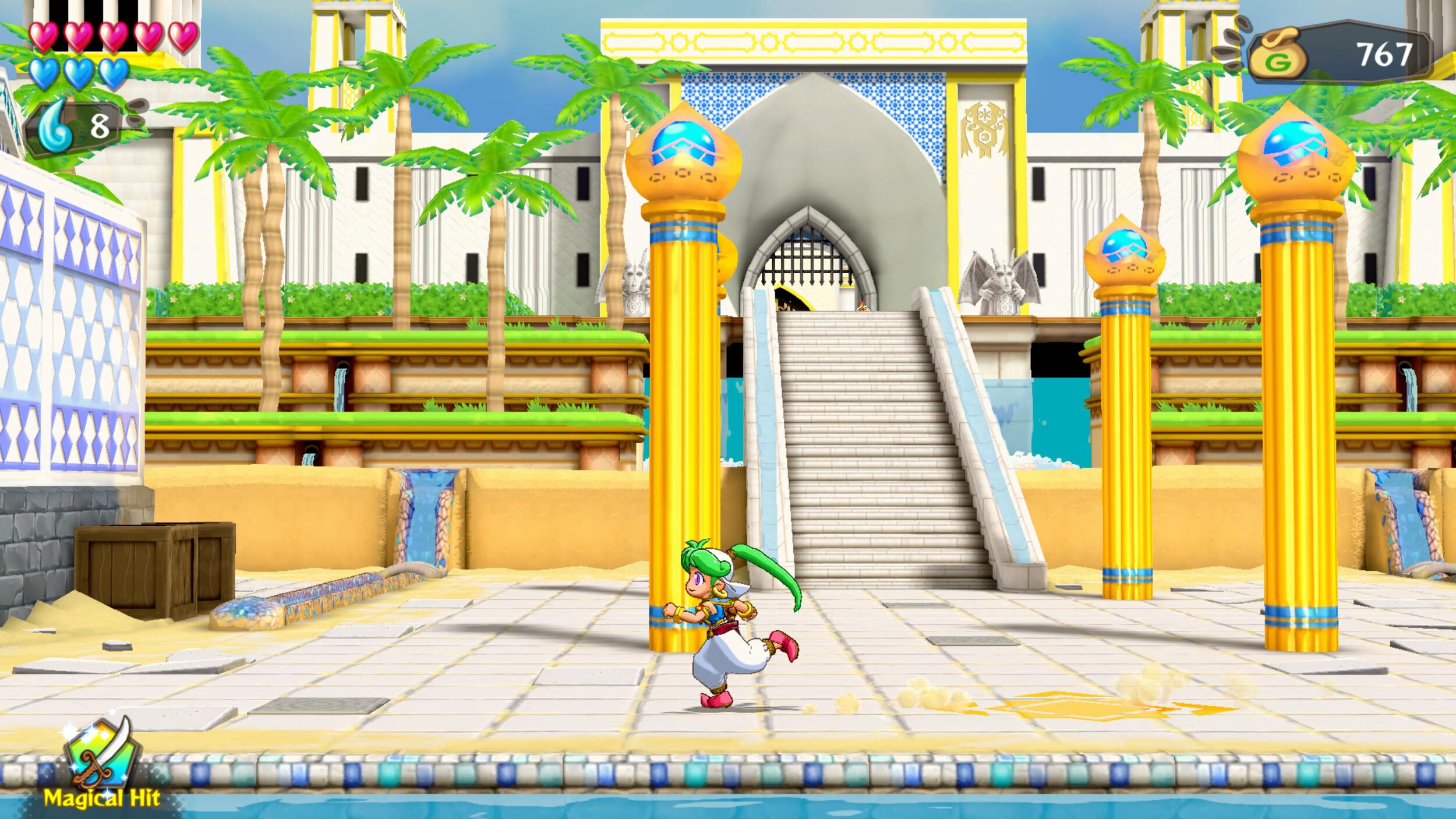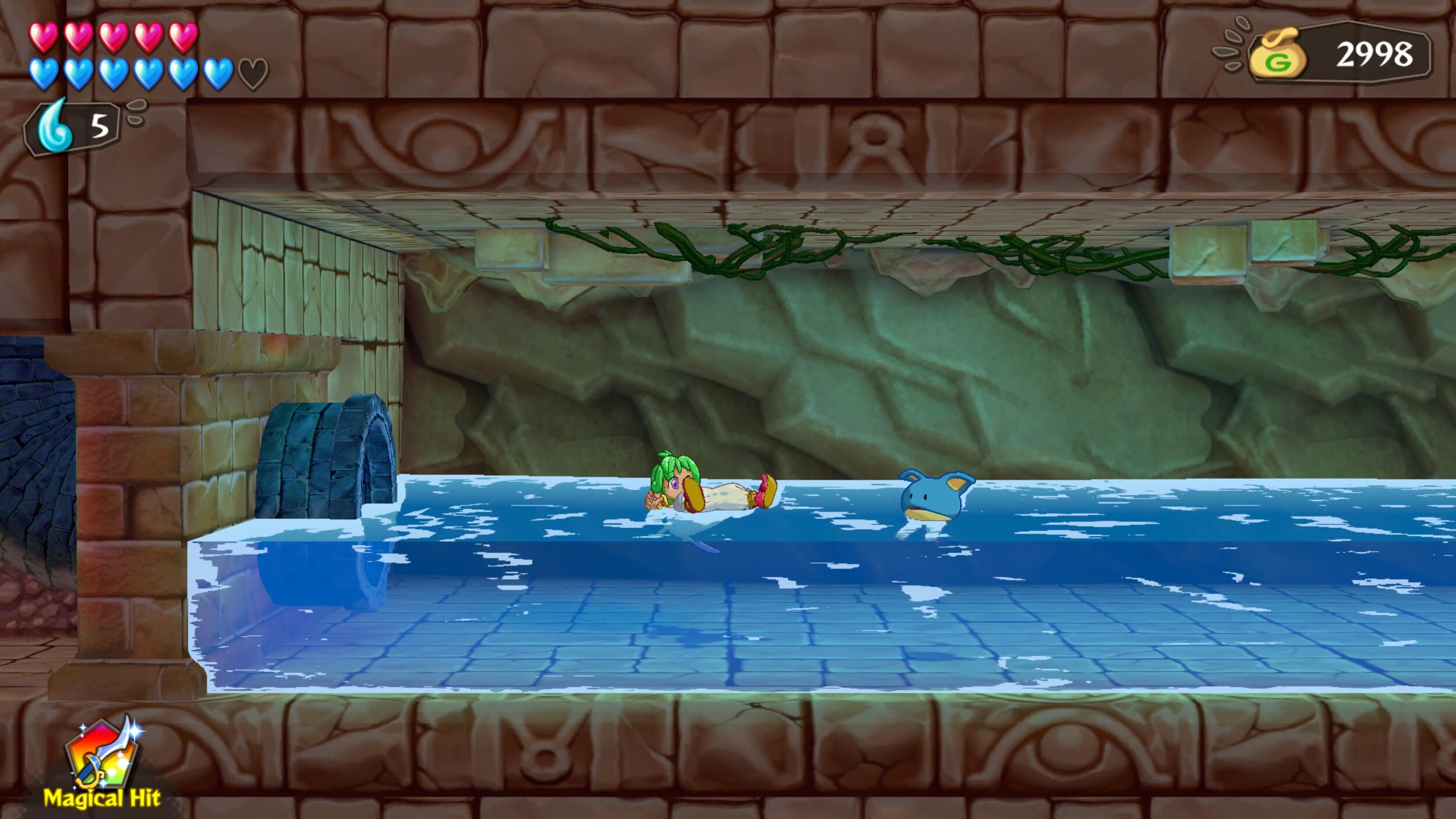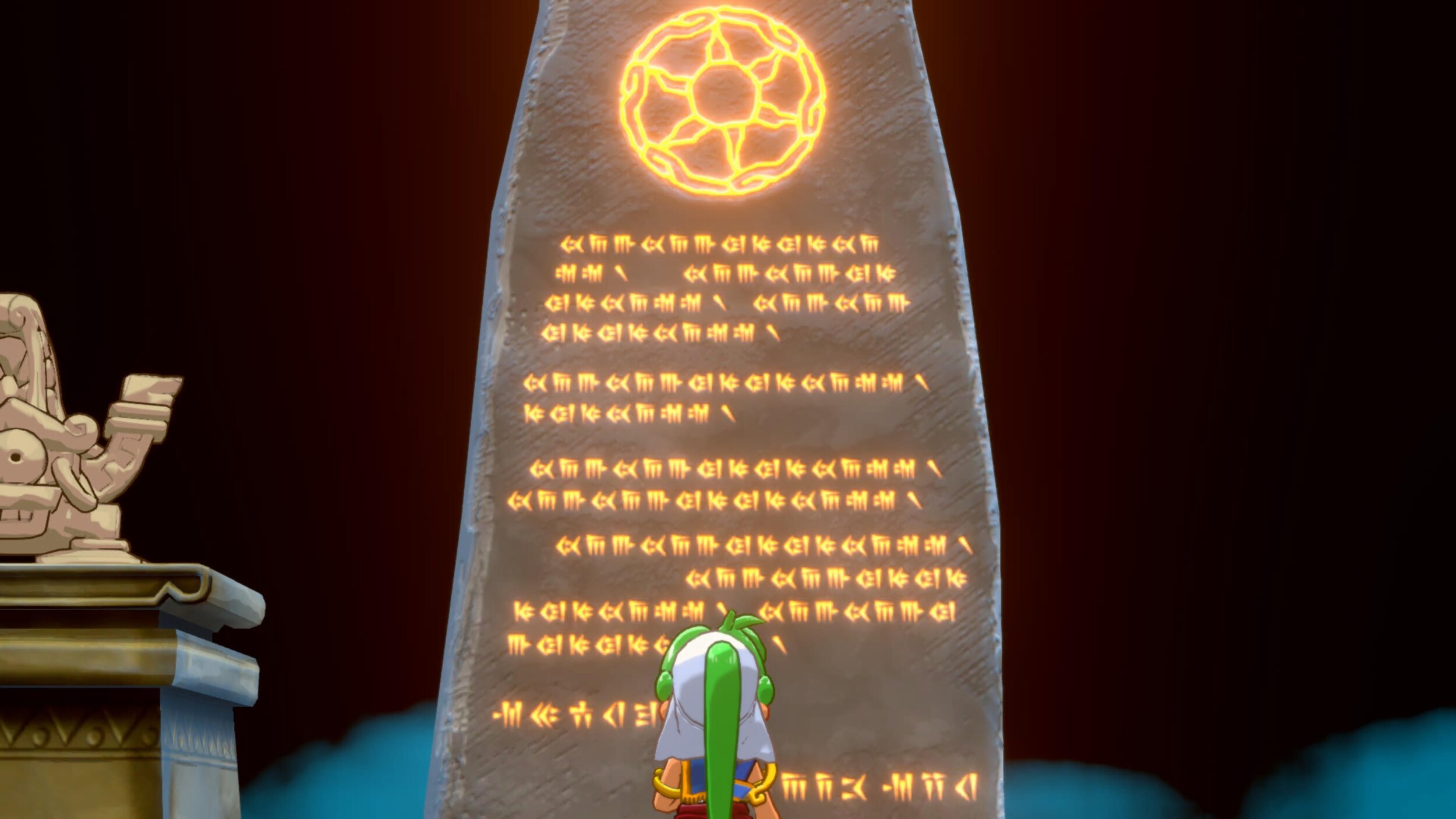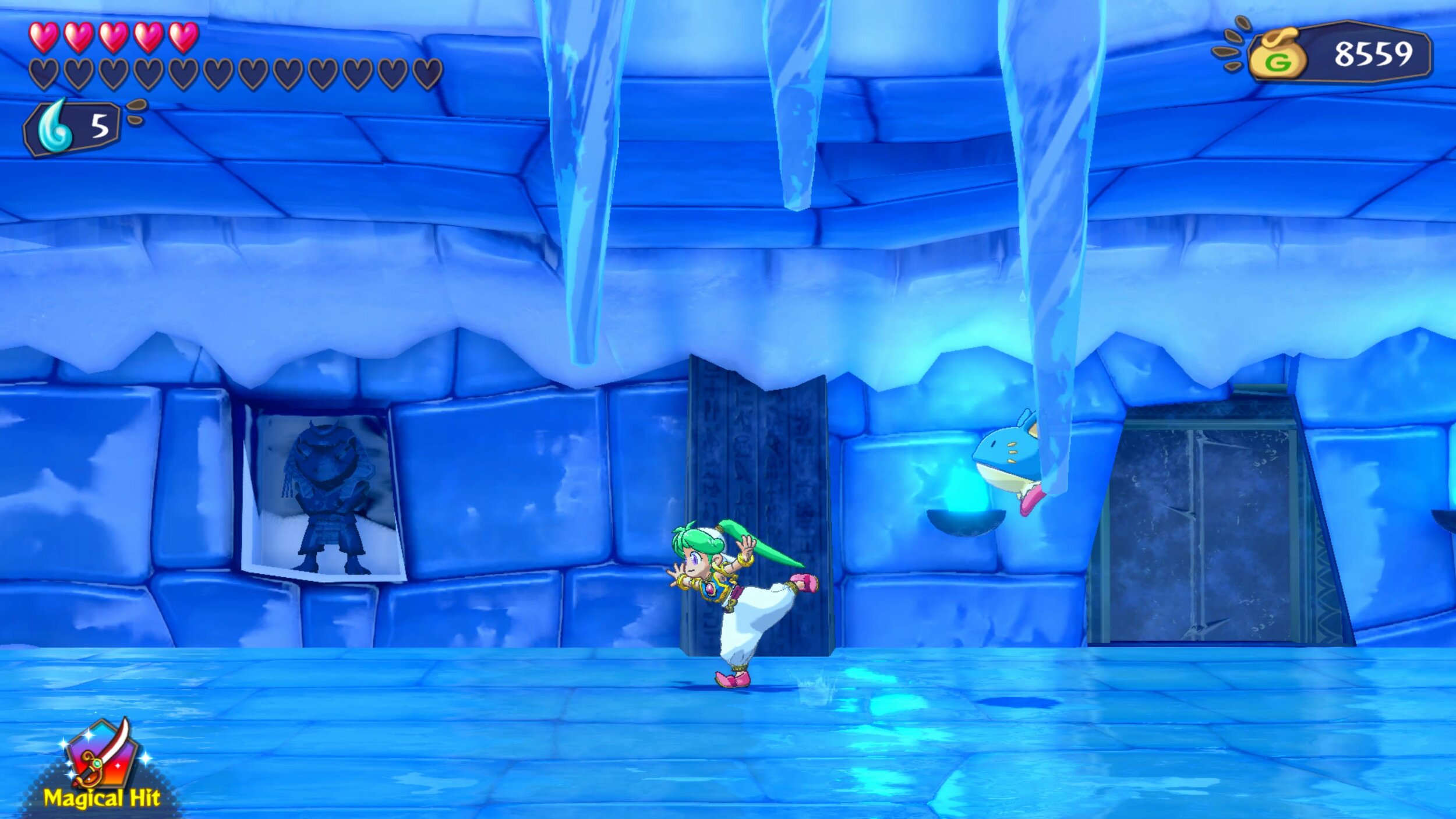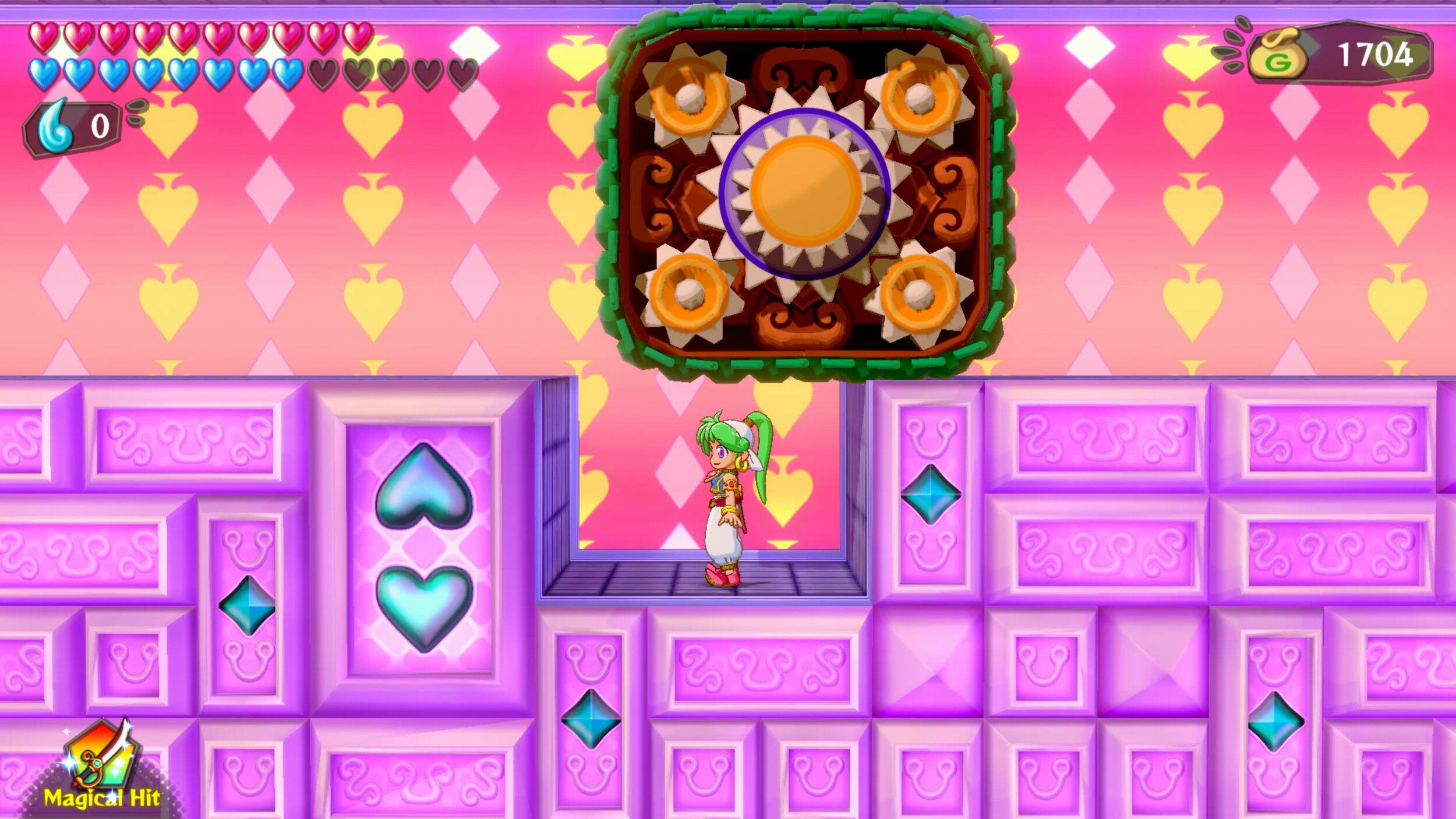“Wonder Girl”
Despite being called Wonder “Boy”: Asha in Monster World, the story in this adventure revolves around the titular Asha as she has just recently become a warrior who is immediately tasked with freeing four elemental spirits that have been captured by a mysterious evil force. Now, this adventure to save the kingdom isn’t new and in fact, is a remake of the 1994 Japanese release Monster World IV, which also saw an English release back in 2012. While the gameplay has more or less remained the same, as well as its core level design, it’s been refined alongside its stunning visuals to create a charming and often touching journey.
Developed by Artdink and published by ININ Games, Asha in Monster World is simply put, a story about good and evil. This remake of the 1994 Genesis game is perfect in capturing the spirit and tone of the original game but does suffer in fully making its modernization feel up to today’s standards. While that may feel a bit harsh, Asha in Monster World is in no way a bad game, or even disappointing, I just feel that Artdink could have broken free of the trappings of the original to go a bit further here, especially as the game is only about 4 hours long. Now, I mention the original, and while the digital version of the game doesn’t come packaged with it, the physical release does, so I would certainly keep an eye out for it through your local retailers as the original is still a very good game, despite its age.
Asha in Monster World has you tracking down four spirits that have been captured across four themed dungeons in order to save the kingdom. You’ll hatch and travel alongside Pepelogoo, a magical blue monster that aids you in double jumping, gliding, and more. The game is light on story, but that is largely in part to adhere to the original. Essentially, you are given just enough story here to contextualize Asha’s progression from level to level. I will say that despite the lack of a big overall narrative, the character work done to some of its characters is really well done, if a bit simple, and yet by the game’s credits, it had gotten me quite attached to many of the game’s charming and endearing cast.
Gameplay-wise, Asha is a 2.5D platformer with basic swordplay and jumping from platform to platform and transitions from background to foreground lanes, such as crawling forward through pipes, or from door to door. You’ll jump from rope to rope, across rotating and spinning platforms, and even partake in a few trivia questions, which, to be honest, was not one of the highlights of the game for me. While I’ll get into my issues with the swordplay shortly, you can perform forward, upward and downward slashes, a powerful attack that does considerably more damage, as well as use a series of elemental shields to protect yourself from various dangers.
So while the swordplay is functional and as basic as it was in the original, it’s the speed of additional and directional attacks that just feel a bit slow. Again, the combat is easily enjoyable and very functional, but It can be a bit slow in reacting to certain boss attacks, as well as causing Asha to stop as she swings, meaning you will hit a lot of air as you run to strike. I also found I would swipe up when I wanted to swipe straight across, and the triggering of the special attack requires you to press both R2+Square (or L2/Circle) instead of just R2, which doesn’t serve any other purpose by its lonesome. Apart from being able to slash upwards, you can also slash downwards as well, and jumping will let you bounce atop enemies for some very enjoyable combat hopping.
While you’ll have access to a shield, it’s pretty easy for Asha to be stun locked taking damage through some environmental hazards, or some enemies as well, making it a bit annoying when you really just have to take the damage. Thankfully, this doesn’t happen that often, but it can certainly sting when it does. The biggest offenders to taking damage is when enemies come out from behind foreground elements and you’re unable to see them, or attacks, such as with the final boss, where the speed of your upwards swing is far slower than their “tendril eye” attack.
As for platforming, much of it is vastly enjoyable thanks to Pepelogoo, who you can whistle to and have them aid you in double jumping or gliding, but, as they grow by feeding them fruit, they tend to become less useful as one of their final forms doesn’t allow you to run with them, and instead only allows you to double jump from a standing position. It’s a weird progression of making one of their final forms less useful than before, and, if they had any increases to their usefulness elsewhere because of the growth, that use is lost on me for what it could be.
Each of the game’s half dozen environments are solid, with a great deal of care put into remaking the game’s design structure. You’ll visit jungles, lava-filled caves, ice temples, underground lairs, and more, with each location popping with color and some fantastic design work in their puzzles and layout. The ice temple does come with a map, and I wish that the other areas did as well, especially when you’re trying to remember which pipe leads back to the place to refill the bucket. The City of Rapadanga was not exactly that great in the original, with much of it being a series of rights and lefts as you explored. Thankfully, Artdink has completely remade it from the ground up, giving it depth and scale like never before. While there are similarities in some aspects, the whole city just shines and is a treasure trove of secrets as you earn more abilities and explore previously unreachable locations.
One of the key differences in this remake is the ability to save anywhere you want. The original had you needing the old man to save, and while he is still there, he is really just there to make snide remarks about the old days, or to give you a hint or two when he can. While the original game can be completed in around 4-5 hours because of having to replay huge chunks when you die, the remake is far more forgiving in this aspect and you can easily beat it around or less than 4 hours. Also, Asha will consume a revival potion upon death now if Pepelogoo is with you, and they are pretty easy to come across, and the temptation to use them is far less because again, you can save before any encounter.
I’ve mentioned it a few times already, but Asha In Monster World is a very charming and good-looking platformer. It’s bright, colorful, and overfilled with personality. The characters and world created here shine and can often look like animated sprites when you are not zoomed in on the cell-shaded character models. The remastered game sounds and soundtrack truly honor the original, and the game features some light voice work for Asha as she swings and attacks as well.
Asha in Monster World does a great job at remaking an original game in keeping to its tone and gameplay, but can also feel a bit too safe in its largely 1:1 recreation. I would have loved to see levels be extended or something to increase the overall time spent with the game. I managed to beat it just under 4 hours, and honestly, I just wish there had been another 2 hours or so of either new levels, or again, seeing these stages have more added to them. The rebuilt city of Rapadanga shows that Artdink can play around within the game’s world and has an understanding of what worked and what didn’t, so it’s a shame we didn’t see more of that creativity in rebuilding its stages. Still, I adored my time here, I just wish the adventure didn’t end so soon.
The digital version of Wonder Boy: Asha in Monster World can be purchased from the Nintendo and Sony stores and is published by STUDIOARTDINK.
The boxed retail version of Wonder Boy: Asha in Monster World comes exclusively with the original Monster World IV published by ININ Games
Developer - Artdink. Publisher - ININ Games/STUDIOARTDINK Released - May 28th, 2021. Available On - PlayStation 4/5, Nintendo Switch, Windows (June 29th). Rated - (E 10+) Fantasy Violence. Platform Reviewed - PS5 - No native PS5 version, but load times are snappy. Review Access - A review code was provided by the publisher for the purpose of this review.


